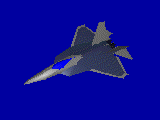


F-22 Raptor
The F-22 program is developing the next-generation air superiority fighter for the Air
Force to counter emerging worldwide threats. It is designed to penetrate enemy airspace
and achieve a first-look, first-kill capability against multiple targets. The F-22 is
characterized by a low-observable, highly maneuverable airframe; advanced integrated
avionics; and aerodynamic performance allowing supersonic cruise without afterburner.
Stealth: Greatly increases survivability and lethality by denying the enemy
critical information required to successfully attack the F-22
Integrated Avionics: Allows F-22 pilots unprecedented awareness of enemy
forces through the fusion of on- and off-board information
Supercruise: Enhances weapons effectiveness; allows rapid transit through the
battlespace; reduces the enemy’s time to counter attack
The F-22's engine is expected to be
the first to provide the ability to fly faster than the speed of
sound for an extended period of time without the high fuel
consumption characteristic of aircraft that use afterburners to
achieve supersonic speeds. It is expected to provide high
performance and high fuel efficiency at slower speeds as well.
For its primary air-to-air role, the F-22 will carry six
AIM-120C and two AIM-9 missiles. For its air-to-ground role, the F-22 can internally carry
two 1,000 pound-class Joint Direct Attack Munitions (JDAM), two AIM-120C, and two AIM-9
missiles. With the Global Positioning System-guided JDAM, the F-22 will have an
adverse weather capability to supplement the F-117 (and later the Joint Strike Fighter)
for air-to-ground missions after achieving air dominance.
The F-22's combat configuration is "clean", that is, with all armament carried internally and with no external stores. This is an important factor in the F-22's stealth characteristics, and it improves the fighter's aerodynamics by dramatically reducing drag, which, in turn, improves the F-22's range. The F-22 has four under wing hardpoints, each capable of carrying 5,000 pounds. A single pylon design, which features forward and aft sway braces, an aft pivot, electrical connections, and fuel and air
connections, is used. Either a 600-gallon fuel tank or two LAU-128/A missile launchers can be attached to the bottom of the pylon, depending on the mission.
There are two basic external configurations for the F-22:
- Four 600 gallon fuel tanks, no external weapons: This configuration is used when the aircraft is being ferried and extra range is needed. A BRU-47/A rack is used on each pylon to hold the external tanks.
- Two 600 gallon fuel tanks, four missiles: This configuration is used after air dominance in a battle area has been secured, and extra loiter time and firepower is required for Combat Air Patrol (CAP). The external fuel tanks, held by a BRU-47/A rack are carried on the inboard stations, while a pylon fitted
with two LAU-128/A rail launchers is fitted to each of the outboard stations.
An all-missile external loadout (two missiles on each of the stations) is possible and would not be difficult technically to integrate, but the Air Force has not stated a requirement for this configuration.
Prior to its selection as winner of what was then known as the Advanced Tactical Fighter (ATF) competition, the F-22 team conducted a 54-month demonstration/ validation (dem/val) program. The effort involved the design, construction and flight testing of two YF-22 prototype aircraft. Two prototype engines, the Pratt & Whitney YF119 and General Electric YF120, also were developed and tested during the program. The dem/val program was completed in December 1990. Much of that work was performed at Boeing in Seattle, Lockheed (now known as Lockheed Martin) facilities in Burbank, Calif., and at General Dynamics' Fort Worth, Texas, facilities (now known as Lockheed Martin Tactical Aircraft Systems). The prototypes were assembled in Lockheed's Palmdale, Calif., facility and made their maiden flight from there. Since that time Lockheed's program management and aircraft assembly operations have moved to Marietta, Ga., for the EMD and production phases.
The F-22 passed milestone II in 1991. At that time, the Air Force
planned to acquire 648 F-22 operational aircraft at a cost of $86.6
billion. After the Bottom Up Review, completed by DOD in September
1993, the planned quantity of F-22s was reduced to 442 at an
estimated cost of $71.6 billion.
A $9.55 billion contract for Engineering and Manufacturing Development (EMD) of the F-22 was awarded to the industry team of Boeing and Lockheed Martin in August 1991. Contract changes since then have elevated the contract value to approximately $11 billion. Under terms of the contract, the F-22 team will complete the design of the aircraft, produce production tooling for the program, and build and test nine flightworthy and two ground-test aircraft. The F-22 team delivered the final F-22 EMD aircraft to the Air Force in June 2002.
A Joint Estimate Team was chartered in June 1996 to review the F-22 program cost and
schedule. JET concluded that the F-22 engineering
and manufacturing development program would require additional time
and funding to reduce risk before the F-22 enters production. JET
estimated that the development cost would increase by about $1.45
billion. Also, JET concluded that F-22 production cost could grow
by about $13 billion (from $48 billion to $61 billion) unless offset
by various cost avoidance actions. As a result of the JET review the program was restructured, requiring an
additional $2.2 billion be added to the EMD budget and 12 months be added to the schedule
to ensure the achievement of a producible, affordable design prior to entering production.
The program restructure allowed sourcing within F-22 program funds by deleting the three
pre-production aircraft and slowing the production ramp. Potential for cost growth in
production was contained within current budget estimate through cost reduction initiatives
formalized in a government/industry memorandum of agreement. The Defense Acquisition Board
principals reviewed the restructured program strategy and on February 11, 1997 the Defense
Acquisition Executive issued an Acquisition Defense Memorandum approving the strategy.
The Quadrennial Defense Review Report which was
released in mid-May 1997, reduced the F-22 overall production quantity from
438 to 339, slowed the Low Rate Initial Production ramp from 70 to 58, and reduced the
maximum production rate from 48 to 36 aircraft per year. The Air Force further slowed the Low Rate Production to 10 aircraft per year in response to GAO recommendations that low rate production not exceed 10 aircraft per year until the Air Force had concluded operational testing and evaluation of the aircraft and certified its operational capability. Initail Operational Testing and Evaluation (IOT&E) is scheduled to be conducted FY 03.
The F-22 EMD program marked a successful first flight
on September 7, 1997. The flight test program, which has already begun in
Marietta, Georgia, will continue at Edwards AFB, California through the year 2001. Low
rate production was initially scheduled to begin in FY99, but restructuring delayed low rate production authorization until August 2001. The Air Force expects to accept delivery of 23 aircraft procured FY 01 - FY 02 during FY 03 - FY 04. Pending aircraft operational tests, the Air Force plans to ramp up procurement starting with FY 2003, to complete delivery by FY 2009. Initial Operational
Capability of one operational squadron is slated for December 2005.
The F-15 fleet is experiencing problems with avionics parts obsolescence, and the average age of the fleet will be more than 30 years when the last F-22 is delivered in 2013. But the current inventory of F-15s can be economically maintained in a structurally sound condition until 2015 or later. None of the 918 F-15s that were in the inventory in July 1992 will begin to exceed their expected economic service lives until 2014.
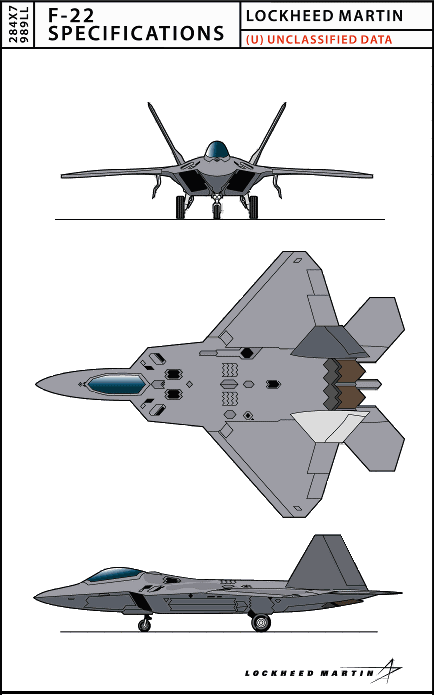

Specifications
|
| Function |
Air superiority fighter
|
| Contractors |
Lockheed Martin Aeronautical Systems: F-22 program management, the integrated forebody (nose section) and forward fuselage (including the cockpit and inlets), leading edges of the wings, the fins and stabilators, flaps, ailerons, landing gear and final assembly of the aircraft.
Lockheed Martin Tactical Aircraft Systems: Center fuselage, stores management, integrated navigation and electronic warfare systems (INEWS), the communications, navigation, and identification (CNI) system, and the weapon support system.
Boeing: wings, aft fuselage (including the structures necessary for engine and nozzle installation), radar system development and testing, avionics integration, the training system, and flight-test development and management.
Pratt & Whitney: F119-PW-100 engines that power the Raptor.
|
|
Major Subcontractors | (partial list): Northrop Grumman, Texas Instruments, Kidde-Graviner Ltd., Allied-Signal Aerospace, Hughes Radar Systems, Harris, Fairchild Defense, GEC Avionics, Lockheed Sanders, Kaiser Electronics, Digital Equipment Corp., Rosemount Aerospace, Curtiss-Wright Flight Systems, Dowty Decoto, EDO Corp., Lear Astronics Corp., Parker-Hannifin Corp., Simmonds Precision, Sterer Engineering, TRW, XAR, Motorola, Hamilton Standard, Sanders/GE Joint Venture, Menasco Aerospace.
|
| Propulsion |
two Pratt & Whitney F119-PW-100 engines
|
| Thrust |
35,000 lbst
|
| Length |
62.08 feet, 18.90 meters
|
| Height |
16.67 feet, 5.08 meters
|
| Wingspan |
44.5 feet, 13.56 meters
|
| Wing Area |
840 square feet
|
| Horizontal Tailspan |
29 feet, 8.84 meters
|
| Maximum Takeoff Weight |
|
| Ceiling |
|
| Speed |
Mach 1.8 (supercruise: Mach 1.5)
|
| Crew |
one
|
| Armament |
Two AIM-9 Sidewinders
six AIM-120C Advanced Medium-Range Air-to-Air Missiles (AMRAAM)
one 20mm Gatling gun
two 1,000-pound Joint Direct Attack Munitions (JDAM)
|
| First flight: |
September 7, 1997
|
| Date Deployed |
deliveries beginning in 2002
operational by 2004
|
| Unit Costs |
DOD's Projected Unit
Prices Before and After Restructuring
Production
--------------------------
Low-rate Full-rate
------------ ------------
Units Unit Units Unit
Estimates cost cost
-------------------------- ---- ------ ---- ------
Before restructuring 76 $142.6 362 $102.8
Restructured without 70 $200.3 368 $128.2
initiatives
Restructured with 70 $200.8 368 $ 92.4
initiatives
------------------------------------------------------
SOURCE: GAO June 1997
|
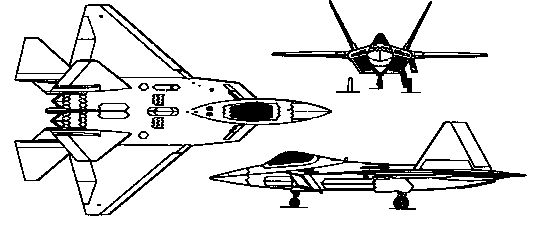



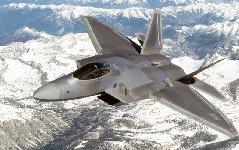
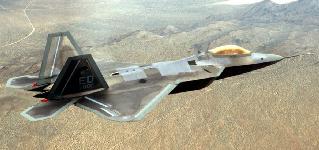

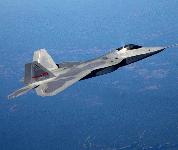
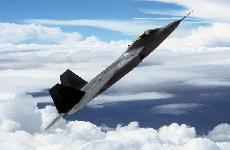
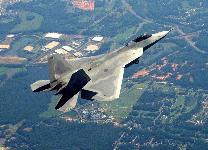
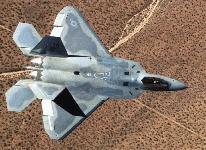
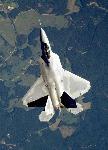
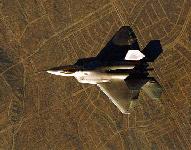
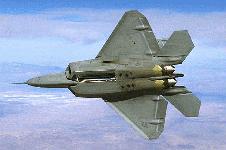
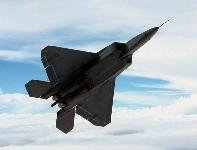
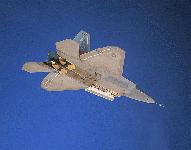

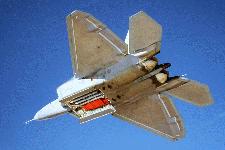

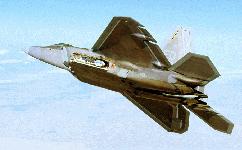

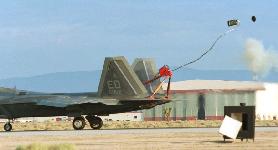
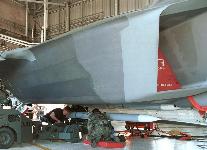
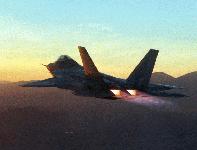

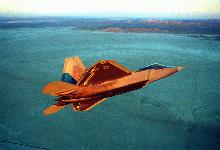
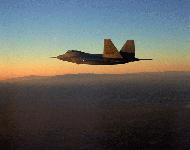
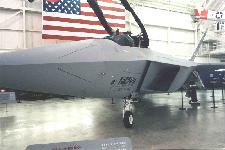
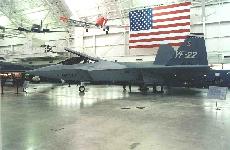
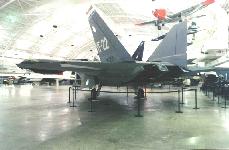
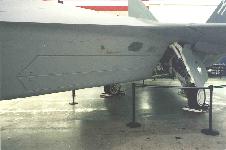
Sources and Resources
- The F-22 Tactical Fighter Factsheet Council for a Livable World Education Fund
- ATTACK AIRCRAFT PROLIFERATION: ISSUES FOR CONCERN Federation of American Scientists
- F-22 EMD FY98 R&D Budget Request
- F-22 Raptor - Lockheed Martin Corp.
- Raptor Watch: News, photos and videos from F-22 testing at the Air Force Flight Test Center, Edwards AFB, Calif.
- F-22 Raptor Lockheed Martin Aeronautical Systems
- F-22 Homepage @ Lockheed-Martin Tactical Aircraft Systems
- F-22 News Releases @ Lockheed-Martin Tactical Aircraft Systems
- Revolution in the Air: F-22 Perspectives Air Force Association
- Why America Needs the F-22 Fighter
- Air Force Magazine Article: Who Needs the F-22?
- USAF XO: F-22 on Track
- ANNEX F Common Solution/Concept List (U) Air Force Mission Area Plan (MAP) [as of 11 July 1997 - Rev 10] - Detailed and comprehensive Air Combat Command descriptions of weapon system modernization efforts required to satisfy known needs.
- THE ADVANCED TACTICAL FIGHTER FOR THE 21ST CENTURY -- [CRITICAL CAPABILITIES FOR THE 21ST CENTURY (ABRIDGED)] (Extension of Remarks - January 03, 1991)
- Loh stresses importance of fighter modernization LANGLEY AFB, Va. (AFNS) 21 March 1995
- Beyond Visual Range: Flying the F-22 Popular Science August 1995 - Bill Sweetman
- China's Purchase Of Russian Fighters: A Challenge To The U.S.-- Richard D. Fisher Senior Policy Analyst The Heritage Foundation Asian Studies Center Backgrounder No. 142 July 31, 1996
- The Gray
Threat: Assessing the Next-Generation European Fighters, by Mark Lorell, Daniel P. Raymer,
Michael Kennedy, and Hugh Levaux, The RAND Corporation - MR-611-AF, 1995,
- F-22: Cost Versus Capability Thomas W. Hampton; Jeffrey M. Reilly (Faculty Advisor) Air Command and Staff College 1998 - Although there are a number of less expensive alternatives, none of them approach the combat capability of the F-22.
- Achieving and Ensuring Air Dominance Craig A. Hughes; Matthew B. Caffrey (Faculty Advisor) Air Command and Staff College 1998 - The potentially grave error of under-funding a SEAD replacement and air base defense, and the danger of proposed future cuts to the F-22.
- F-22: Why It Should Not Have Been Approved for Engineering &
Manufacturing Development in 1991 Chuck Spinney -- 26 Mar 1998
- PENTAGON SPOKESMAN'S REGULAR BRIEFING MARCH 31, 1998 -- test program for the F-22
- Raptor Follies Chuck Spinney -- 10 Apr 1998
- The Rising Cost of Low Readiness Chuck Spinney
-- 11 Apr 1998
- [EXCERPTS] DoD News Briefing Tuesday, April 14, 1998 George Wilson's article in which the Comptroller argued, Mr. Gansler to make public the cost overrun figure on the F-22.
- DoD News Briefing , March 26, 1998 - Pentagon reaction to a GAO report suggesting that Congress should delay funds at least a
year to Lockheed Martin for the initial F-22s because of problems with testing.
- Air Force's next generation air dominance fighter shows its stuff 14 October 1998 -- (AFPN) -- The Air Force's next generation of air dominance aircraft is performing better than expected. "We have two F-22s out at Edwards, and the aircraft are flying very well," said Gen. Dick Hawley, Air Combat Command commander.
- F-22 Raptor goes supersonic for first time 13 October 1998 -- (AFPN) -- In the skies over Edwards Air Force Base, Calif., the Air Force's newest fighter traveled faster than the speed of sound for the first time Oct. 10.
- F-22 Raptor resumes flight 9 Apr 1999 (AFPN) -- Following a series of successful modifications and maintenance test point accomplishments, the F-22 resumed flight April 8
- F-22 FLIGHT TEST PROGRAM UPDATE Society of Experimental Test Pilots' annual convention - April 1999
- FIGHTER POLITICS - L (ONLY Voice of America 20 July 1999 -- DEFENSE OFFICIALS HOPE TO REVIVE THE MULTI BILLION DOLLAR PROGRAM TO BUY THE MOST CAPABLE - AND EXPENSIVE - FIGHTER PLANE THE WORLD HAS EVER SEEN.
- F-22 demonstrates 'supercruise' for first time (AFPN) 21 Jul 1999 -- The Air Force's next-generation air-superiority fighter flew at sustained speeds of greater than Mach 1.5 without afterburner, demonstrating for the first time one of its most important and advanced capabilities: the ability to "supercruise."
- Why We Need The F-22 By Richard P. Hallion [the Air Force historian] Washington Post July 22, 1999
- DoD News Briefing Thursday, July 22, 1999 -- Complacency is the enemy of military dominance. So the Air Force has been working for several years to leap head to the next generation of air superiority and that would be the F-22 fighter, designed to give us air dominance well into the next century.
- House votes to reduce F-22 budget (AFPN) 23 Jul 1999 -- The U.S. House of Representatives voted July 22 to cancel the $1.8 billion procurement portion of the $3.0 billion requested for the F-22 in fiscal 2000.
- Are We Ready To Lose The Next Air War? By F. Whitten Peters, Acting Secretary of the Air Force New York Times July 24, 1999
- COHEN - FIGHTER PLANE Voice of America 26 July 1999 -- Supporters of the F-22 "Raptor" say it will be the best fighter plane the world has ever seen. Critics say it will be the most expensive.
- DoD's Military Chiefs Urge Congress to Restore F-22 Funds American Forces Press Service 30 July 1999 -- With one strong voice, the Joint Chiefs of Staff and commanders from all of DoD's unified commands have told Congress that development of the F-22 jet fighter is essential to the nation's defense.
- Air Force separates F-22 facts from myths (AFPN) 4 Aug 1999 -- The following facts clarify America's need for the F-22 as the premier fighter of the 21st century Air Force.
- F-22 moves into next phase of testing (AFPN) 13 Aug 1999 -- The F-22 Raptor, managed at Aeronautical Systems Center here, successfully met another test milestone recently by flying beyond 26 degrees angle of attack in a 2.5-hour sortie over Edwards Air Force Base, Calif.
- F-22 meets fourth of five 1999 DOD flight-test criteria (AFPN) 1 Sep 1999 -- The Air Force's new air superiority fighter, the F-22 Raptor, flew in excess of 60 degrees angle of attack during flight testing Aug. 25, at Edwards Air Force Base, Calif., reaching another milestone and satisfying another flight-test requirement mandated by the Department of Defense.
- Commentary: own the sky by Gen. Michael E. Ryan (AFPN) 06 October 1999 -- The one aircraft capable of dealing with these serious challenges to future air superiority is the F-22 Raptor.
- Boeing delivers updated F-22 avionics software; final board requirement met 27 Oct 1999 (AFPN) -- Boeing delivered an updated F-22 avionics software package to its 757 flying test bed aircraft ahead of schedule.
- DoD News Briefing - Presenter: Secretary of Defense William S. Cohen November 9, 1999 -- The reason that we need the F-22 as well as the Joint Strike Fighter is to give us the same kind of capability that we had to have in this war against Kosovo.
- Air Force to get six F-22s in 2002 Air Force Print News 17 Nov 1999 -- The Air Force will acquire six test F-22 aircraft in 2002 with funds provided by Congress in the budget resolution passed Oct. 5. In the resolution, Congress delayed production of the F-22 from December 1999 to December 2000, and cut funding by $560 million to make the Air Force justify the F-22's cost and prove its technology.
- Boeing reduces F-22 program costs with new wing process (AFPN) 08 December 1999 -- The tooling will reduce the time it takes to build a set of wings by approximately 370 hours, and cut overall cycle time by 12 percent.
- F-22 program on track (AFPN) 22 Dec 1999 -- An Air Force program official expressed continued confidence that the F-22 program will meet projected delivery schedules and cost limitations.
- Air Force awards contracts for six more F-22 Raptors Aeronautical Systems Center Public Affairs 3 Jan 2000 -- The Air Force Dec. 30 awarded contracts totaling more than $1.5 billion to Lockheed Martin Aeronautical Systems, Marietta, Ga., and Pratt & Whitney, West Palm Beach, Fla., to build six F-22 Raptor production-representative test vehicles.
- F-22 gets gun system fitted 12 Jan 2000 (AFPN) -- Representatives from the F-22 System Program Office and Air Combat Command observed as the first gun system was slid into position into the eighth flyable mid-fuselage manufactured by Lockheed Martin Tactical Aircraft Systems here.
- Acquisition official discusses F-22 role in air power future (AFPN) 22 Feb 2000 -- Today we have four aircraft around the world that are on par with our F-15. There are two Russian aircraft, the Eurofighter that is coming on line and there is the French Mirage 2000.
- Problems resolved, F-22 fighter is ready for release, Stars and Stripes, 27 October 2000 -- The Air Force is scheduled to release the F-22, its next-generation fighter, in little more than a month after overcoming software and mechanical engineering problems, Air Force Secretary F. Whitten Peters said Thursday.
- Pentagon Spokesman's Regular Briefing - F-22, U.S. Department of Defense, 19 December 2000 -- Q: Ken, I've got an airplane question involving the F-22 Fighter. There's a new cost estimate saying it could cost $9.1 billion over the congressional cap that was set three years ago - by Dan Coats, ironically. The Pentagon on January 3rd...
- F-22 aircraft No. 4005 completes successful first flight, Air Force Print News, 05 January 2001 -- The flight incorporated Block 3.0 software components, which provide functions such as radar processing and sensor fusion, electronic warfare and countermeasures, communication, navigation and identification, and pilot/vehicle interface. It was one of three remaining tasks required before a decision to start F-22 low-rate initial production.
- DoD Has Homework to do Before F-22 Decision , American Forces Press Service, 07 February 2001 -- DoD still has plenty of homework to do before making a final decision on acquiring the F-22 fighter for the Air Force.
- Air Force declares 'war on costs' in bid to keep F-22 program on track, , By Lisa Burgess Stars and Stripes, 08 February 2001 -- Backed against the wall and ordered to cut $2 billion from the cost of the F-22 program by Congress, the Air Force has unveiled a new program to keep the fighter on track.
- F-22 maintenance is nearly 'plug and play', Air Force Print News, 19 March 2001 -- Future maintainers of the F-22 Raptor will realize quickly what America's most technologically advanced fighter has in common with most of today's machines.
- F-22 production again delayed over funding problems, need for testing, By Sandra Jontz, Stars and Stripes, 12 July 2001 -- The Air Force F-22 Raptor is again delayed, and officials are tossing around cost overruns of between $2 billion and $9 billion on the price tag for the $63 billion program.
http://www.fas.org/man/dod-101/sys/ac/f-22.htm
Maintained by Robert Sherman







